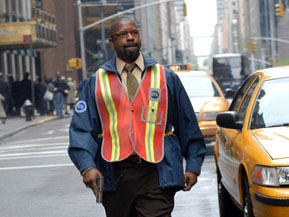|
|
Book vs. MovieThe Taking of Pelham 123By Russ BickerstaffJune 15, 2009
While far from being anywhere near as dark as the book, the film is somewhat fearless in its portrayal of the callous toughness of New Yorkers, who would make it through a hostage situation and still threaten to sue the city for its handling of the situation. Of particular interest here is the communication between officials and the hijackers. The dialogue as its written into the book is almost whimsically disrespectful, with New York transit police openly taunting the hijackers over the radio while reluctantly complying with their demands. This disrespect between police and criminals has its impact in the book, but takes on a whole different feel in a more dramatic presentation. This is the way New Yorkers deal with people they're forced to work with regardless of the situation, and we get a really vivid picture of that here. The problem is that it doesn't go far enough. We don't really see the ugly side of everyone and people do come across as heroes. And that means that Shaw's criminal mastermind actually comes across as a villain, who defiantly electrocutes himself to death rather than die in the significantly unglamorous fashion of the novel. The 1974 film adaptation may be a glamorized Hollywood version of the story, but its heart is firmly planted in a very gritty New York.
[ View other columns by Russ Bickerstaff ]
[ View other Book vs. Movie columns ]
[ Email this column ]
|

|
|
|

|
Sunday, May 5, 2024
© 2024 Box Office Prophets, a division of One Of Us, Inc.


